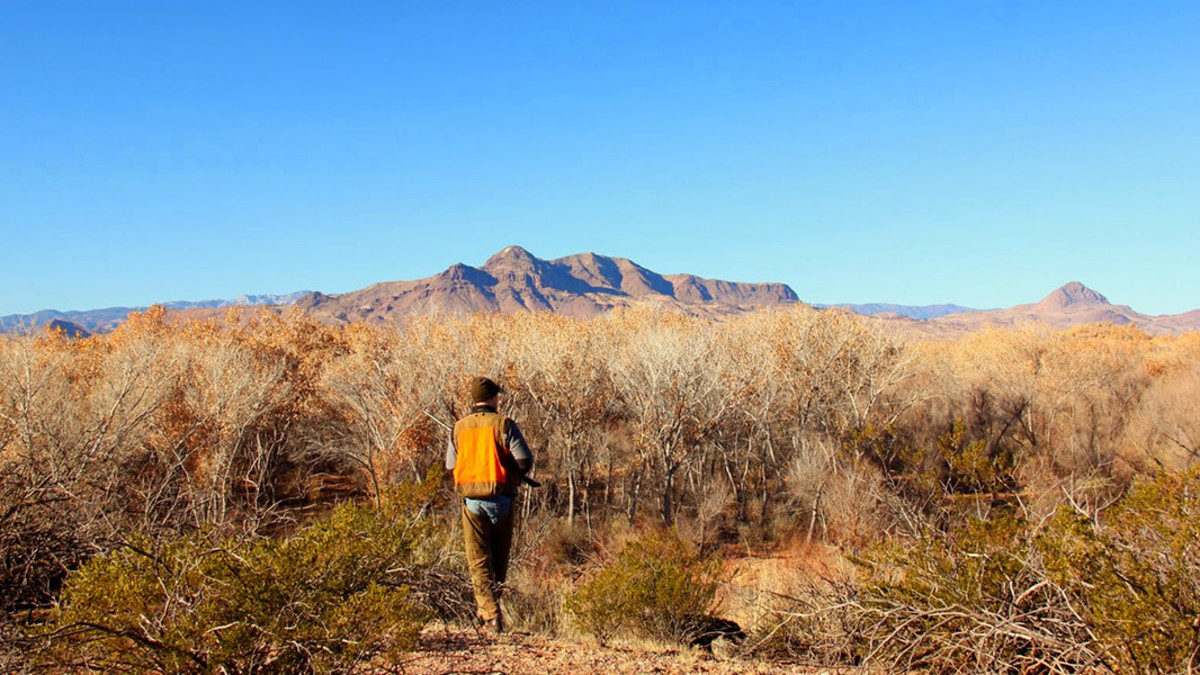
“Western” quail is an admittedly broad category, as it includes a total of five quail species that live west of the Mississippi, Gambel’s, valley, Mearns, scaled, and mountain.
To the newcomer, distinguishing the various western quail species is made somewhat difficult by the confusion of common names. Two species share the common name “blue quail,” and several species are known by completely different names in different areas.
What’s more, the ranges of several western quails do overlap, and the introduction of quail outside of their natural ranges has further muddied the picture.
While each of the species has its own rigidly peculiar behaviors and habitat requirements, it is convenient to lump them together for organization purposes as they share a number of key attributes.
They live in coveys that typically break up into smaller groups when flushed. Coveys are widely scattered, and you sometimes have to walk long distances between flushes. They live in rugged country, which demands good physical fitness on the part of the hunter They are runners, and will often put a lot of distance between themselves and a hunter before flushing. They all make excellent table fare, and are regarded by many hunters as the absolute finest tasting game birds.
Bar Room Banter
The Western quail species, as well as the bobwhite quail, are all monogamous. Unlike most other upland game birds, they do not engage in elaborate mating rituals and they are not as viciously territorial.
Western Quail Hunting Opportunities
With five species of western quail, hunting opportunities are widespread in the West and particularly in the Southwest. Some quail seasons begin in September and run into late January. Daily bag limits range from eight to ten.
General Tips for Western Quail
Stay With a Covey
When flushed, quail coveys will bust up into small groups and singles. Watch carefully to see where these small groups land, and then mark the location. Typically, these smaller groups hold tighter than full coveys. You will typically kill more western quail on secondary flushes than you do on initial flushes.
Flighty Birds
Western quail respond to hunting pressure by becoming flighty. They run more and flush sooner, giving far fewer shooting opportunities. Coveys that reside closer to roads and access points should be chased early in the season, before they get educated. Once the season has progressed and the birds turn spooky, plan on doing some walking. By getting a couple miles away from the roads, you’ll find quail that are still holding on to their opening-day naiveté.
Make Them Fly
Several of the western quail species are marathon-grade runners, preferring to escape by foot rather than wing. Try the following tricks to get them to flush:
- Fire a shot into the air.
- Let out a war-whoop, or blow a quail call. The latter might make them stop, allowing you to catch up and flush them.
- Rush the birds on foot. Exercising extreme care with your firearm, obviously.
- Shout to your companions, directing them on a route to intercept birds and hopefully flush them.
Get in Shape
Western quail country is often rugged and unforgiving. Get in shape before embarking on a western quail hunt. Treat it like an elk hunt in this regard, not like a stroll through pheasant country.
A Bird in the Hand
Quail are small, well camouflaged, and capable of covering a lot of ground on foot. When you hit a bird from the sky, go immediately to the place where it landed and begin searching for the bird. If you can’t find it, start zigzagging in a direction that leads away from your shooting position.
A quail with a busted wing will usually run in the same direction that it was flying. If you’re fast and you don’t waste a lot of time trying to score a double or triple, you stand a greater chance of catching wounded birds.





Conversation